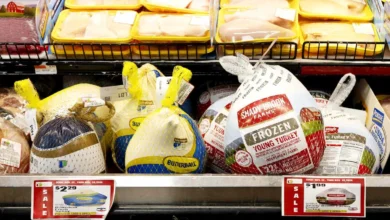The New Rules Of Dining Out In America

The New Rules Of Dining Out In America
- Solo dining is surging, with solo-diner reservations up 22% year over year, reflecting how Americans’ increased time spent alone is reshaping restaurant habits.
- Early-week and early-day dining are gaining traction — Tuesday reservations and morning or early dinner bookings have seen the biggest jumps as diners seek calmer, affordable experiences.
- While reservations and cancellations are rising, no-shows are down slightly, signaling that diners remain eager to eat out but are becoming deliberate and cautious with their plans.
Restaurant reservations are on the rise, but the way people are booking them has shifted. New data shows clear changes in timing, party size, and follow-through that are reshaping how restaurants anticipate demand.
Reservations for solo diners spiked 22% in the third quarter of 2025 compared to the previous year, according to the latest trend report from restaurant software platform Toast. This growth reflects a broader change in how Americans spend their days. Adults aged 35–44 spent 6.05 hours alone daily in 2024, up from 5.69 hours the year before, according to the U.S. Bureau of Labor Statistics’ American Time Use Survey. Solo dining has become easier to plan, a shift linked to the increase in time spent alone.
Weekends still draw crowds, but early-week reservations let diners avoid higher prices and busier dining rooms. Tuesday bookings jumped 15% year over year, marking the largest daily increase of any day of the week. This suggests that the “prime time” for dining is spreading out, with customers seeking restaurant experiences earlier in the week rather than waiting for the weekend rush.
As younger diners seek structured, balanced routines, earlier dining has become common. The 9 a.m. breakfast slot saw the biggest jump in reservations compared to last year, up 19%, and the 4 p.m. “early bird” dinner slot followed with a 15% increase. The morning momentum and the shift toward early dinners confirm that dining times are adjusting to new schedules, while late-night dining at 9 p.m. and 10 p.m. declined slightly by 1%.
Tipping patterns reveal a similar sense of caution. Full-service restaurants averaged 19.2% in the third quarter, slightly higher than the seven-year low recorded earlier this year, while quick-service tips held at 15.8%. The flat line at counter-service restaurants points to continued sensitivity around add-on costs.
Lighthouse Films / Getty Images
While diners are willing to book, their commitment to those plans has become volatile. Seated reservations grew by 8% compared to last year, but that demand was closely mirrored by a 7% rise in cancellations. This creates a dynamic in which the intent to dine out is high, but the follow-through is inconsistent.
There is, however, a distinction between changing plans and simply vanishing. While cancellations are up, no-show reservations decreased by 1%. This suggests that while diners are becoming fickle with their commitments, they are at least notifying restaurants in advance rather than skipping the reservation without notice. No-shows have fallen, likely because tighter budgets make diners deliberate about canceling rather than disappearing.
Recent survey data suggests that many people are approaching their spending with caution. The Conference Board’s October Consumer Confidence Index report shows a small dip in overall sentiment, with the index at 94.6, and a sharper drop in expectations about income and job stability, which fell to 71.5. The downturn was most noticeable among adults under 35 and those earning under $75,000 a year, groups that tend to dine out regularly. When outlooks tighten, people tend to plan around what feels manageable in the moment, which can show up as earlier meals, smaller groups, and reservations that function as options than commitments.
With dining demand plateauing, the market is characterized by sustained uncertainty. Mid-week demand is growing, solo diners are filling seats, and reservations are often treated as placeholders. What we are seeing now is a recalibration of dining out, where guests are adjusting the rules of the restaurant visit to fit their own schedules and budgets.
Disclaimer: This news article has been republished exactly as it appeared on its original source, without any modification.
We do not take any responsibility for its content, which remains solely the responsibility of the original publisher.
Author:Stephanie Gravalese
Published on:2025-11-23 18:01:00
Source: www.foodandwine.com
Disclaimer: This news article has been republished exactly as it appeared on its original source, without any modification.
We do not take any responsibility for its content, which remains solely the responsibility of the original publisher.
Author: uaetodaynews
Published on: 2025-11-23 15:07:00
Source: uaetodaynews.com





